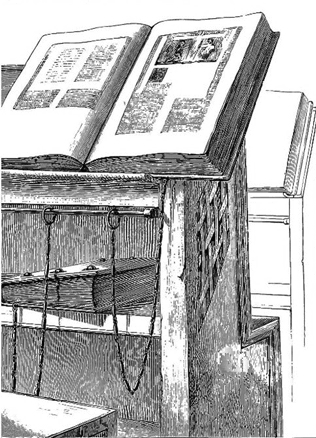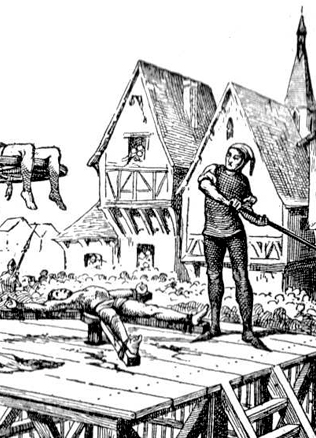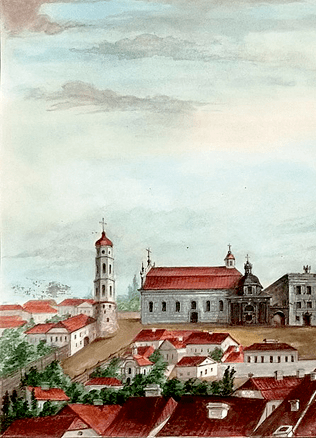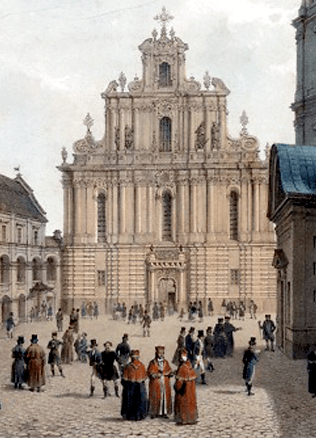Tombstones in the Grand Duchy of Lithuania in the 16th-17th centuries
Marking of burial location is characteristic of all cultures and historical epochs. However, in the course of history, it assumed different forms. The most frequent form to be met is the epitaph (a tombstone entry) in church, whereas marking the burial place in the cemetery is related to the late tradition. In Western Europe tombstones signifying the burial location of famous persons began to spread in the 12th century. In Poland, Władysław II Jagiełło is believed to have been one of the first individuals to have commissioned a tombstone for himself (while still alive) in Wawel Cathedral (1434). Tombstones in the Grand Duchy of Lithuania started to spread only in the mid-16th century. This explains the absence of tombstones commemorating St. Casimir, the Prince of Poland (who died in 1484) or Alexander, the only ruler of Poland and Lithuania to be buried in Vilnius in 1506. Had they lived a centenary later, the tombstones would have certainly been erected for them.
The originators of tombstone “fashion”
The first tombstone in Vilnius Cathedral and, to the best of our knowledge, in the entire territory of the Grand Duchy of Lithuania, was erected in 1535. Commissioned by Poland’s Italian Queen Bona, a tombstone was built to commemorate Grand Duke Vytautas, more than a centenary after his death. Unfortunately, the tombstone, like Vytautas’ remains, disappeared from the Vilnius Cathedral in the mid-17th century. Even though there is no evidence illustrating what it looked, Vytautas’ tombstone is thought to have resembled the tombstone erected for Albertas Goštautas, the Chancellor of the Grand Duchy of Lithuania, who died in 1539. On it, the nobleman is portrayed life sized, in full armour, holding a flag and a sword as symbols of his military merit. After the first two aforementioned tombstones were installed, such an immortalization of the burial place became popular all over the country. Shortly afterwards, several tombstones were erected to commemorate the Bishops of Vilnius and the two wives of Sigismund Augustus, buried in Vilnius. Tombstones started to be erected in other churches as well. Ever since then, the interest in tombstones was increasing. Almost all early tombstones were commissioned abroad, mostly in Krakow, then transported to the burial location and installed there. This was due to the absence of proper construction materials (such as marble and stone) and professional artisans. And yet, in the first half of the 17th century, when foreign sculptors were invited to decorate St. Casimir’s chapel in Vilnius, the tradition of erecting tombstones locally was launched. Quite often, the remains of the marble used for the construction of the chapel were used.
The second quarter of the 17th century was the golden age of tombstones in Vilnius.
At that time, more tombstones were erected than during the whole century up to that time. In the mid-17th century, the interest in tombstones started to decrease. They did not disappear altogether, but their popularity was lower compared to the first half of the 17th century. In most cases, a simple epitaph with a plentiful text describing and glorifying the deceased was preferred to a sculptural composition on the tombstone. In most cases, marble of various colours was chosen for the construction of tombstones, more rarely stone and sandstone was used. Examples of stucco moulding can also be found among the tombstones of the 18th century.
Plaques and ledger stones: sources for art history and indications of a worldview
The tombstones reflect a change of artistic mood swings and adaptation of innovations. For example, the figure of Albertas Goštautas is portrayed on his tombstone in an archaic manner, following the medieval principles. The Chancellor’s figure is shown in a static and representative way. The nobleman is portrayed lying on the pillow as if he were laid out after death. On the other hand, the position of his legs and the flag rod, held tightly in his hand allow us to assume that he is standing firmly rooted on the ground. Shortly afterwards, the figure of the deceased Bishop of Vilnius Paweł Holszański is presented as if he were drowsing, with the hand cradling his head. Such a portrayal witnesses a change in the worldview and a wish to convey death as a short dream. The message of the tombstone is that the deceased will be soon awakened by the trumpets of the Last Judgment and march into Eternity. The deceased persons are shown in a similar manner at the beginning of the 17th century, with some semblance of their bodies taking a nap. The son of Mikołaj Krzysztof Radziwiłł the Orphan, who died in his infancy, is portrayed on the tombstone half-naked, as if he suddenly fell asleep for a short spell, as children tend to do, without letting the blossom of the flower go from his hand.
Intricate masterpieces of the art of death
One can wonder at a wide range of tombstones erected – from a small tombstone portraying the bust of the deceased person up to a huge monument with several figures of the dead. For example, in the Church of Halshany, a tombstone dedicated to the Vice-Chancellor of the Grand Duchy of Lithuania Pawel Stefan Sapieha (died in 1635) and his three wives, on which the figures of the four deceased persons were portrayed. One of the most impressive tombstones as far as size goes is the tombstone of Lew Sapieha, Hetman of the Grand Duchy of Lithuania (died in 1633), and two of his wives located in the right nave of the Church of St. Michael the Archangel in Vilnius. The entire composition, which is about 5 m wide, 2 m deep and 10 m high, is arranged and installed as a church bench, built at the main altar, so that all the subsequent Bernardine benefactors could sit on this bench. It has to be admitted that sitting on the tombstone was and still is a rare opportunity. In the foreground, the two of Lew Sapieha’s wives are portrayed, and in the centre, slightly above, is the figure of the nobleman himself. The tombstone is rich in various stories and coat-of-arms. As many as 19 figures are shown on it. In the upper part, Christ’s Resurrection scene is depicted. We can see frightened soldiers who have just found an empty tomb and the figure of Christ rising upwards. Such scenes, giving hope for the deceased to be reborn for Eternal life, are often portrayed on the Baroque tombstones.
In the course of history, new types of portrayal on the tombstones emerged. Thus, life sized figures started to be shown not only lying but kneeling (most often) in front of the Crucified, as if witnessing the power of redemption of Christ’s Passion. We can also find tombstones, on which only the bust of the deceased or his head is portrayed, leaving considerable space for the inscription. The tombstone dedicated to Jan Stanisław Sapieha, the Marshal of the Grand Duchy of Lithuania (1635) in St. Michael’s church in Vilnius is noteworthy for being the first tombstone of such a type in the Polish-Lithuanian Commonwealth. It is installed as a portal and serves as adornment to the sacristy door frame.
The tombstone, installed as a passage, symbolizes transition from the earthly to Eternal life.
It is unfortunate that in the mid-20th century, the bust of the deceased which had been portrayed in the upper part of the tombstone, disappeared, with only two sad angels keeping vigil at the coffin of the deceased remaining.
Literature: Marija Matušakaitė. Išėjusiems atminti. Laidosena ir kapų ženklinimas LDK. Vilnius, VDA leidykla, 2009.
Mindaugas Paknys



